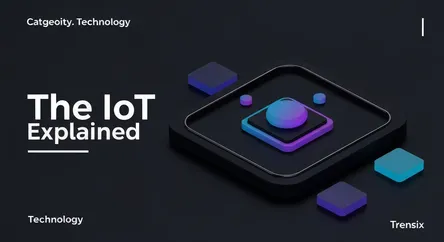Technology
The IoT Explained

Discover the Internet of Things (IoT), the vast network of connected devices that share data. Learn how smart gadgets are changing our world.
What is it?
The Internet of Things (IoT) refers to the vast network of physical objects—or 'things'—embedded with sensors, software, and other technologies for the purpose of connecting and exchanging data with other devices and systems over the internet. These gadgets range from common household items like smart thermostats and lightbulbs to sophisticated industrial tools. Wearable fitness trackers, smart home security systems, and connected vehicles are all everyday examples of IoT in action, creating a seamless web of communication between the physical and digital worlds.
Why is it trending?
IoT's rapid growth is fueled by several converging factors. The availability of low-cost sensors and affordable, reliable internet access has made it easier than ever to connect devices. The rise of cloud computing platforms provides the necessary infrastructure to store and process the massive amounts of data these devices generate. Furthermore, advancements in artificial intelligence and machine learning enable powerful analysis of this data, unlocking valuable insights and driving automation, which makes IoT applications increasingly intelligent and useful for both consumers and businesses.
How does it affect people?
IoT technology is transforming daily life by creating more efficient and convenient environments. For individuals, this means smart homes that automate routines, wearables that monitor health, and connected cars that improve safety. On a larger scale, IoT is the backbone of smart cities, helping manage traffic, conserve energy, and enhance public safety. In industries, it revolutionizes processes through predictive maintenance and optimized supply chains, boosting productivity and creating new economic opportunities. It fundamentally changes how we interact with our surroundings, making them more responsive and intelligent.